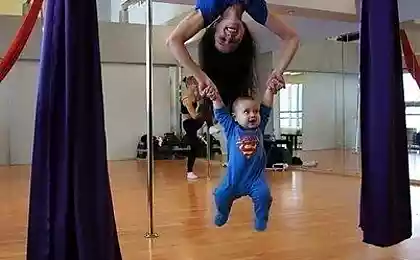1928
Interesting facts about the planet Earth

-Ground can be regarded as a living organism that possesses his own breath: it regulates your temperature, consumes energy and constantly changes its skin.
-Issledovateli In astrobiology found that the current stable state of the Earth's climate is an anomaly, and in the next few billion years it should "bounce back».
-Under The oceans are the largest mountain ranges that cover the surface of the globe like seams on a baseball ball.
More than 80% of the Earth's surface are of volcanic origin.
-Sredi Native American common belief that the Earth's surface rests on a giant turtle, and she trembles every time the turtle takes a step.
-In One of the most popular hypotheses, Earth once shared its orbit with another planet, which scientists named Thea. Many billions of years ago, these planets collided, resulting in the biggest disaster in its history, the Earth acquired an additional weight and get your own satellite.
-other Theory states that once about 200 million years ago in the Paleozoic and Mesozoic era, all the continents were a single mass of the Earth (the supercontinent Pangaea). The northern part of the vast continent, Laurasia, consisted of Eurasia and North America, and in the southern part of Gondwana, included Australia, South America, Africa, Antarctica and India. Later, in the separation of the continents, India broke away from Gondwana and joined Africa.
Fibreboard and chipboard Earth's crust move at the speed of a few inches per year, which is approximately equal to the length of the human nail regrowth per year. On this basis, it can be argued that in 250 million years on Earth will be a new supercontinent.
-Start The Industrial Revolution marked the beginning of an era marked effect on the environment. Since then, humanity produces as much carbon dioxide, which seriously upset the balance of gases in the atmosphere and its chemical composition.
-Number Of carbon dioxide in the water and in the atmosphere, as well as solar energy received by the Earth, are factors determining the duration of life on Earth and the existence of the planet itself.
-Too Big greenhouse effect is dangerous for the present life on earth, but if the greenhouse effect was not at all, the average temperature of the planet would have been -18 ° C instead of + 15 ° C, which we have now.
-Dzhungli Amazon is home to one-third of plant and animal species on Earth, and it supports the theory that the planet can save life on its surface within a limited area.
-There Is strong evidence that the universe was formed after the Big Bang about 13 billion years ago, and two-thirds of its history took place before the formation of the solar system. During this time and killing many born stars and hydrogen, helium and lithium gradually began to be replaced by other elements with more complex atoms such as carbon, oxygen, silicon, magnesium and nitrogen. Earth is its origin and development owes a huge number of processes that have occurred and will occur in the course of her life.
-Ground, which can be regarded as a metal bowl covered with stone cladding, hurtling into space at a speed of 107,000 kilometers per hour.
-Suschestvovanie Moon is very important for the existence of life on earth, as it stabilizes its inclination relative to the sun. Without the moon on Earth would occur chaotic climate change, and it could not be habitable.
-Most Energy of the nucleus and the magma of the Earth to help her keep oceans and atmosphere. This energy also helped shape the tectonic plates that separate from the magma oceans. Then, heat and pressure pushed to the surface of the oceans land, which was easier seabed.
-Also Solar energy, land use enormous amount of heat that is inside it. Every year the earth's surface out billions and billions of calories internal energy.
-After Earth began to cool, grown to its current size, the lithosphere, which enveloped the planet like an eggshell, began to burst and formed a large and twelve 7 "small" floating islands with jagged edges. These islands and have become modern tectonic plates that are constantly moving over the viscous mantle, rub against each other, face and try to climb on each other.
-Tektonicheskie Plates of the Earth are divided into continental and oceanic education. Continental Earth's crust is formed from a relatively light granite and reaches from 29 to 48 kilometers, while the denser basaltic ocean floor reaches a thickness of only 8-9, 5 kilometers.
-Zemletryaseniya, Volcanoes and mountains of growth are good signs, as these processes show that the life of our planet continues. All this is the result of the movement of tectonic plates.
-Many Other planets and their satellites also have volcanoes, but they do not have mountains. This means that there is not formed tectonic plates, which are the result of the collision and crushing their edges becomes formation of mountain ranges.
-Tektonicheskie Plate and contributed to the development of life on Earth. Volcanoes threw a huge mass of water vapor that condensed on the surface of plate tectonics, and gases ejected onto the surface of the Earth, its atmosphere gradually formed.
-so-Called "hot spots" - places where basalt columns "pierce" the crust and allow magma to flow to the surface. The movement of tectonic plates on such "hot spots" leads to the formation of chains of volcanic islands, which are called seamounts. One example of these volcanic mountains is a mountain range, which is under the modern Hawaii.
-Gimalai - Is an example of the movement of tectonic plates meet each other.























